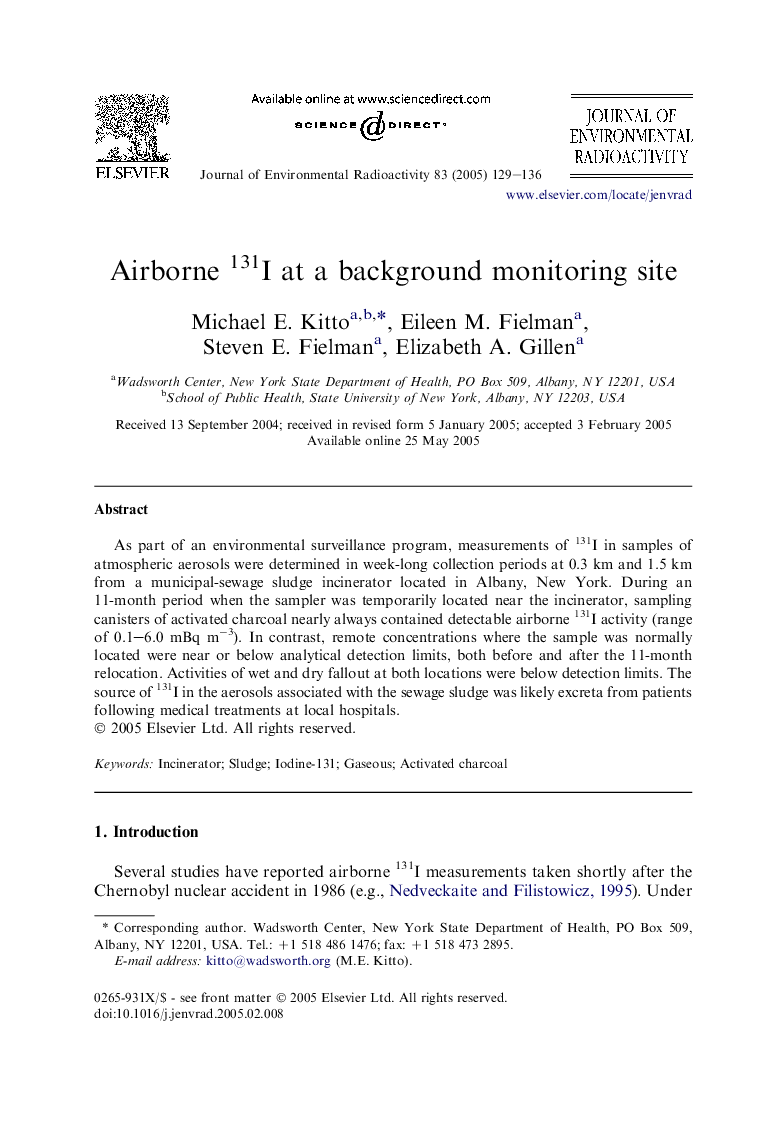| Article ID | Journal | Published Year | Pages | File Type |
|---|---|---|---|---|
| 10686743 | Journal of Environmental Radioactivity | 2005 | 8 Pages |
Abstract
As part of an environmental surveillance program, measurements of 131I in samples of atmospheric aerosols were determined in week-long collection periods at 0.3 km and 1.5 km from a municipal-sewage sludge incinerator located in Albany, New York. During an 11-month period when the sampler was temporarily located near the incinerator, sampling canisters of activated charcoal nearly always contained detectable airborne 131I activity (range of 0.1-6.0 mBq mâ3). In contrast, remote concentrations where the sample was normally located were near or below analytical detection limits, both before and after the 11-month relocation. Activities of wet and dry fallout at both locations were below detection limits. The source of 131I in the aerosols associated with the sewage sludge was likely excreta from patients following medical treatments at local hospitals.
Related Topics
Physical Sciences and Engineering
Energy
Nuclear Energy and Engineering
Authors
Michael E. Kitto, Eileen M. Fielman, Steven E. Fielman, Elizabeth A. Gillen,
